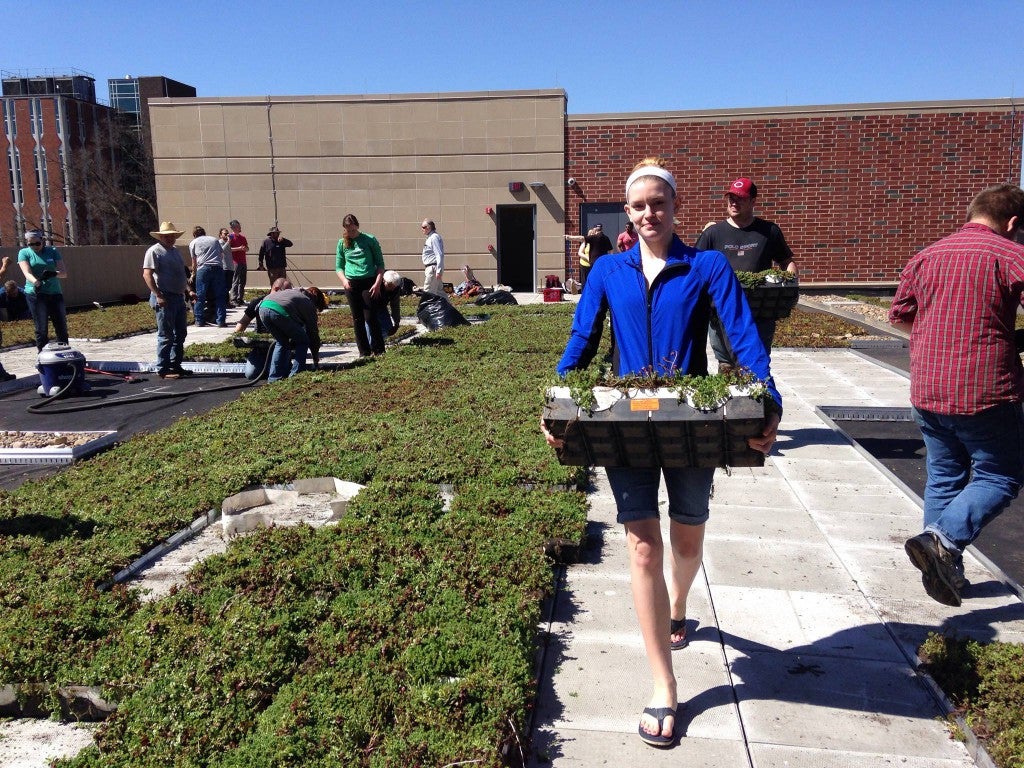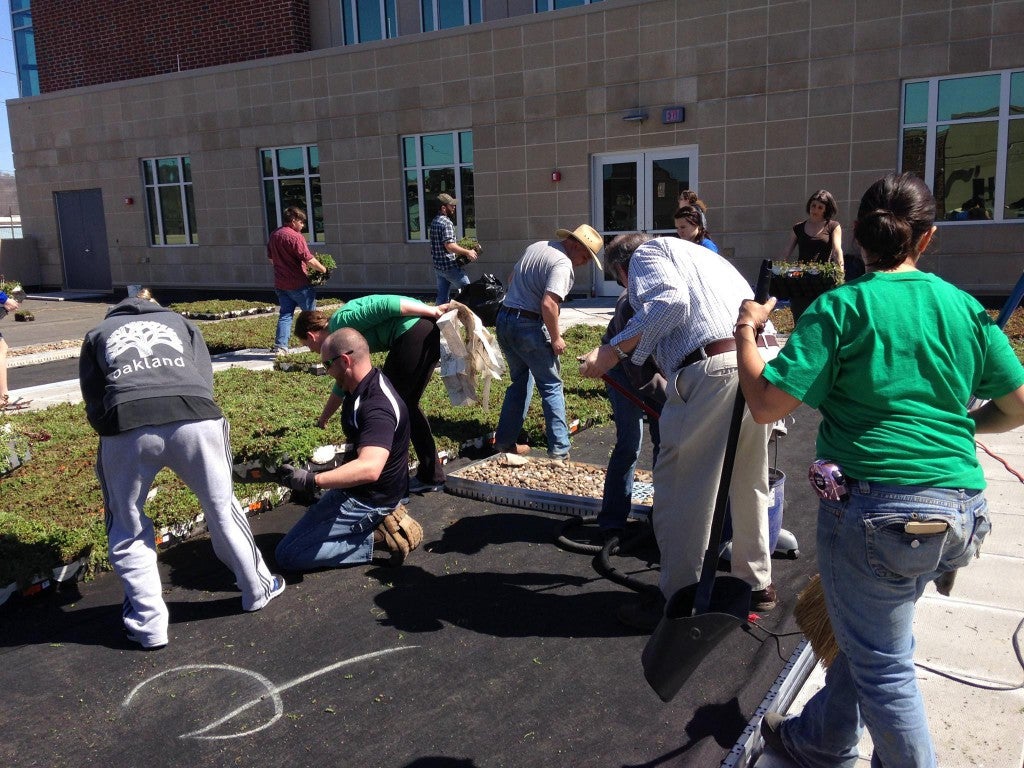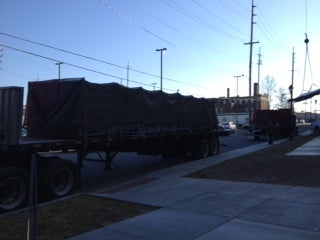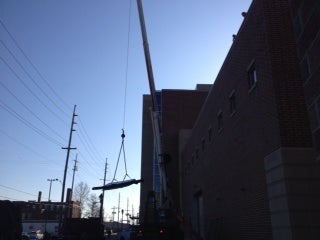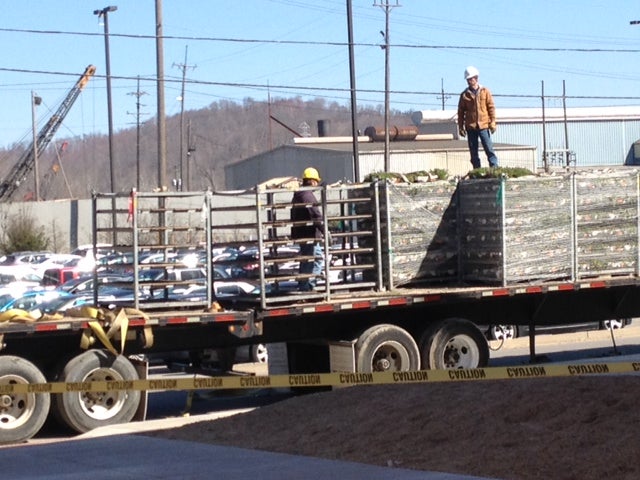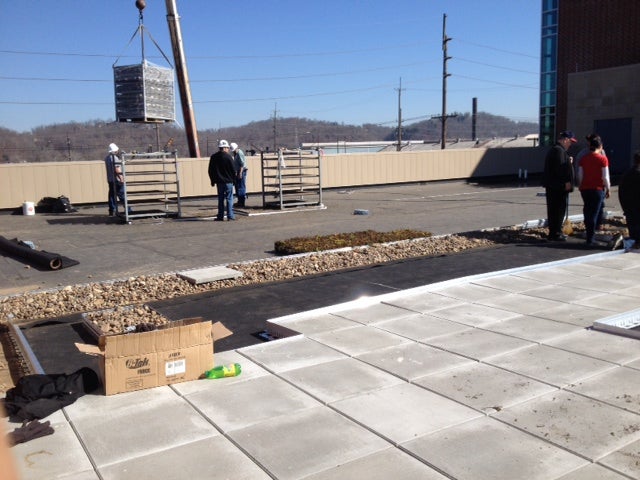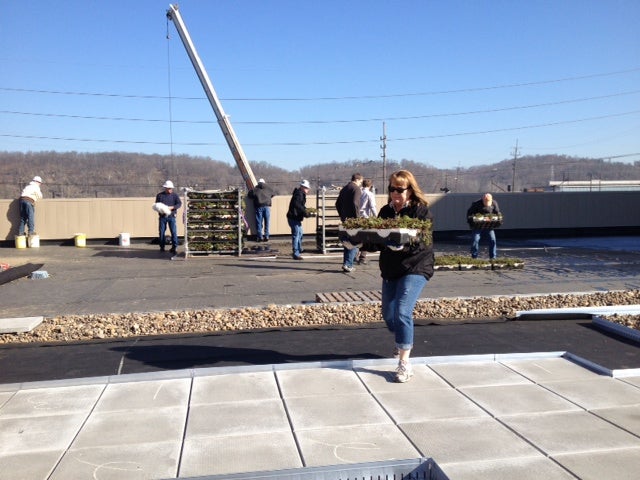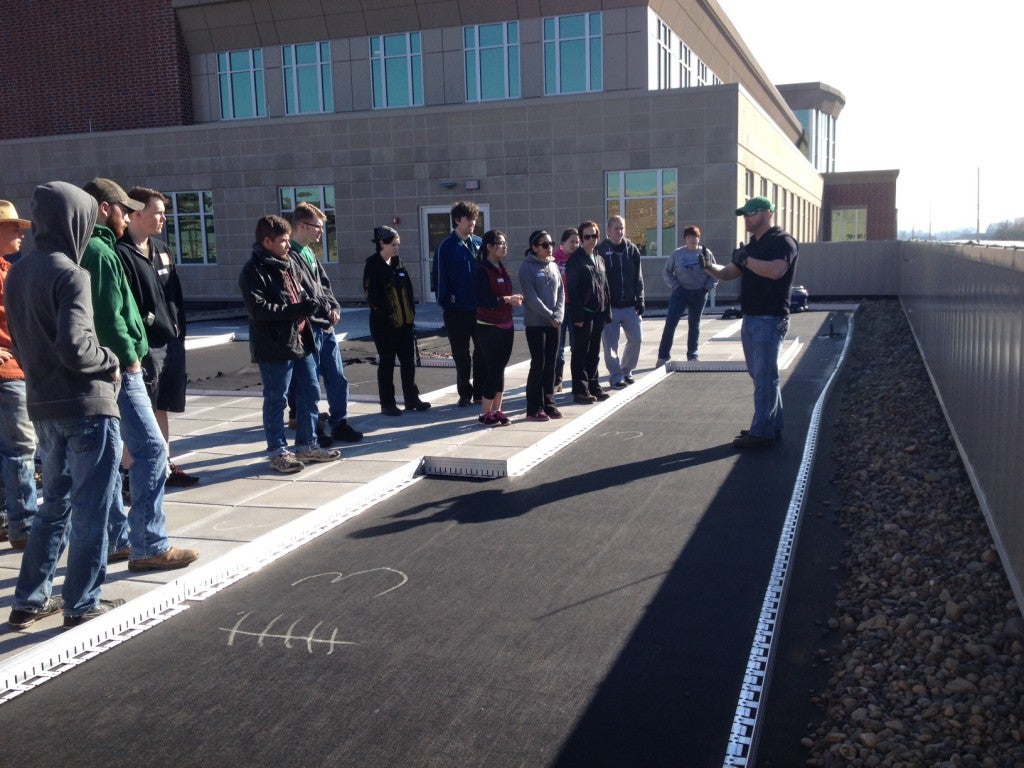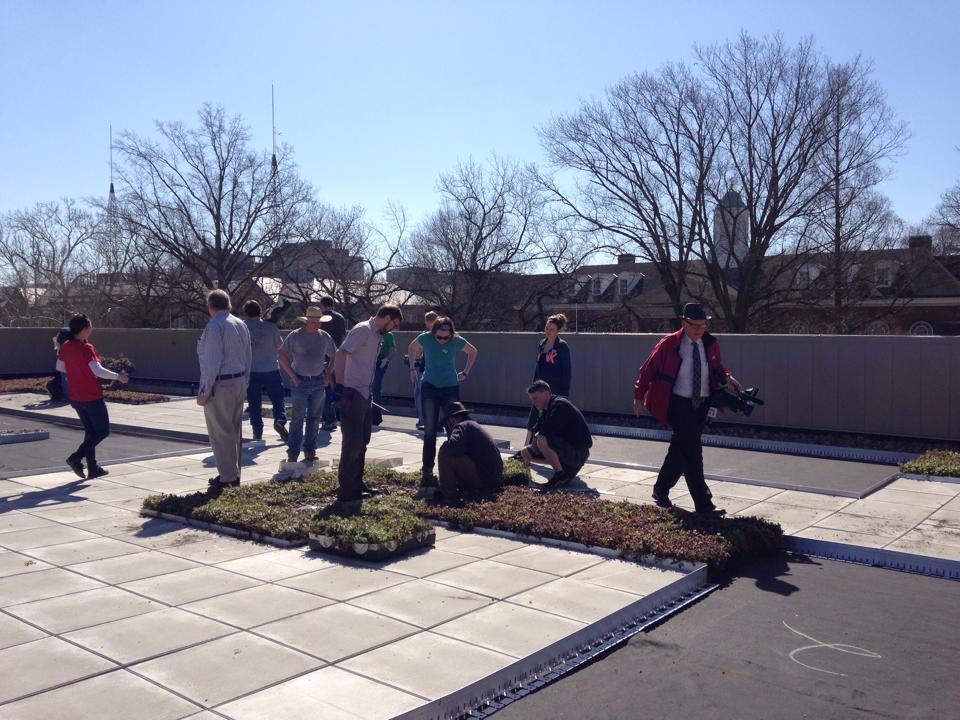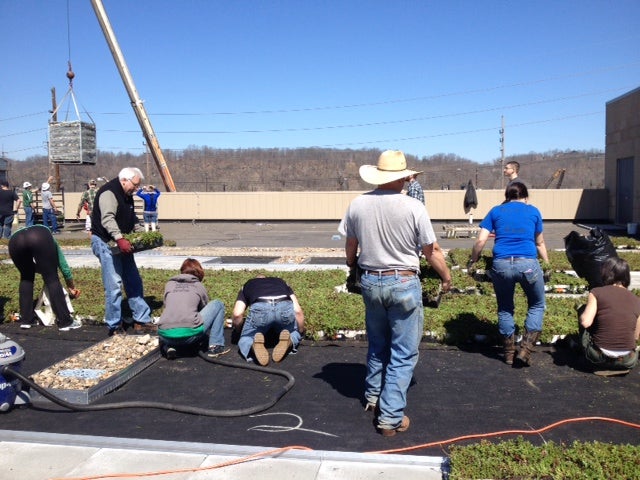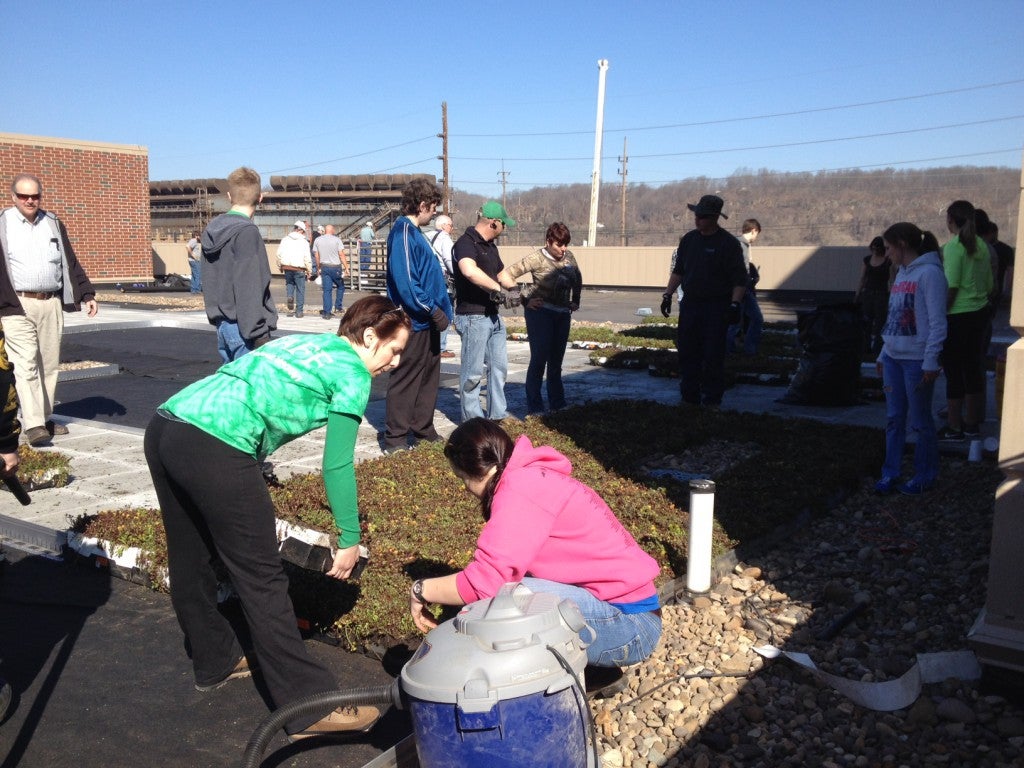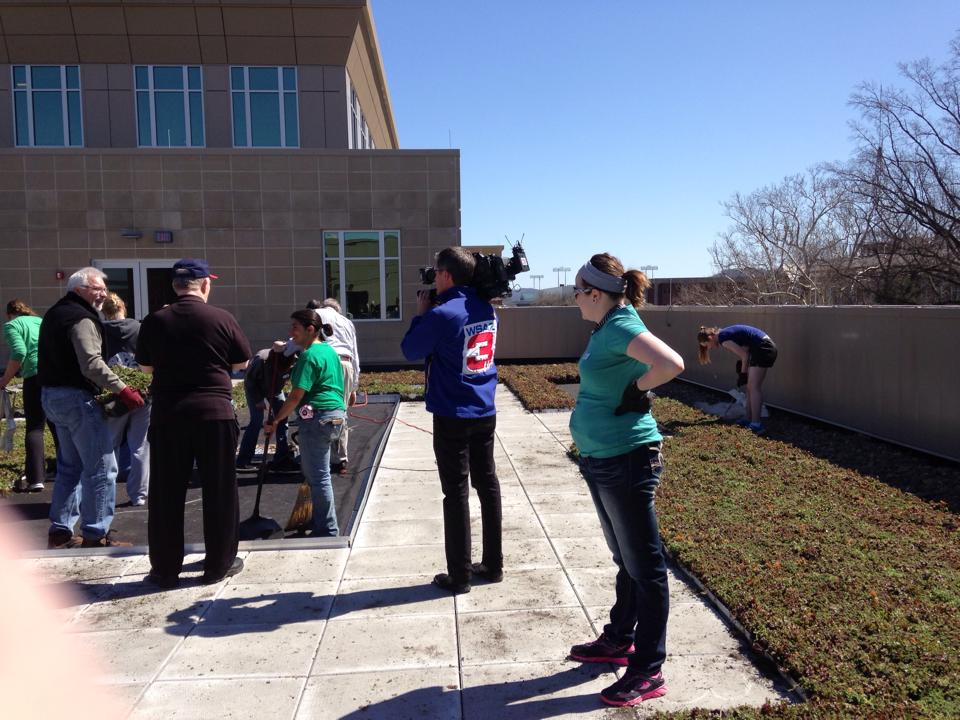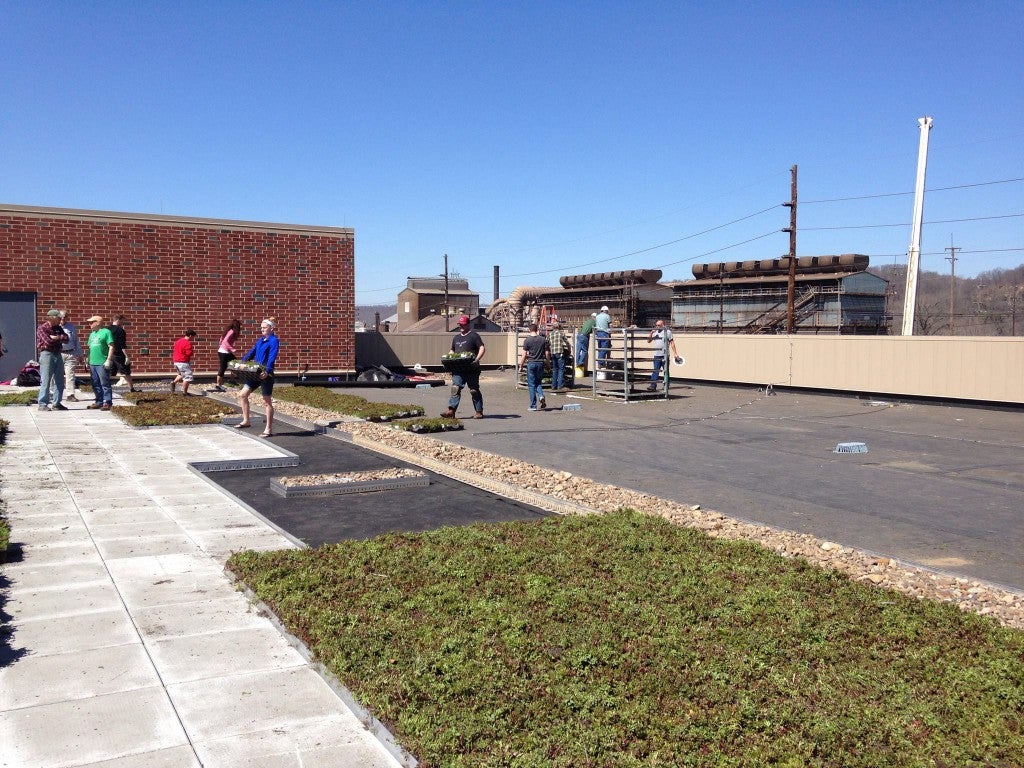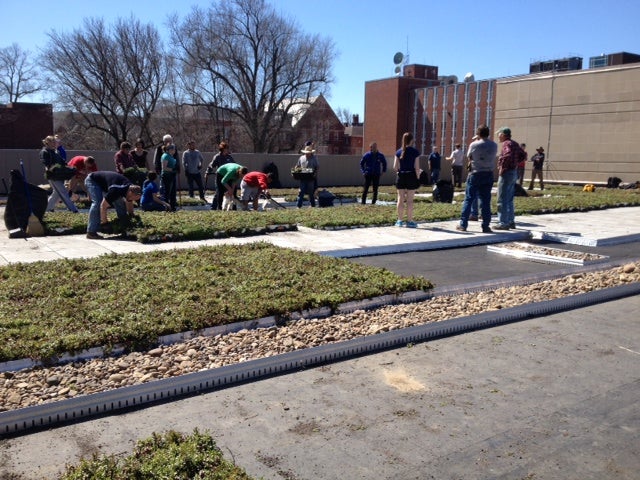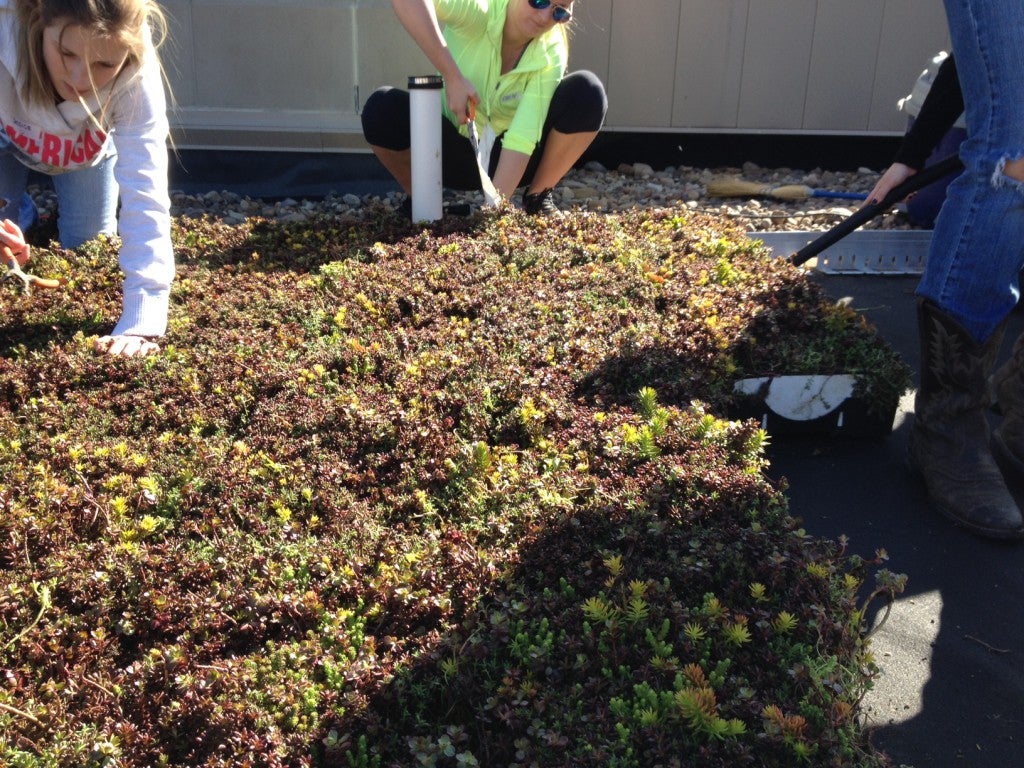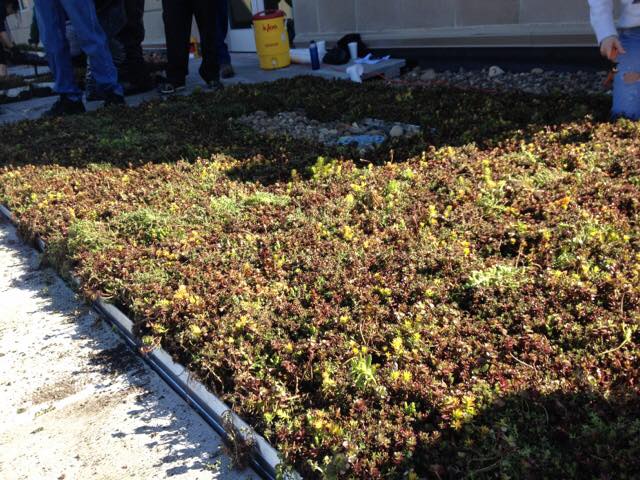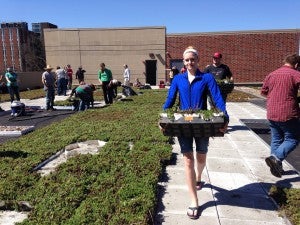 The Green Roof above the Advanced Material and Testing laboratory was installed by over 90 volunteers on April 1st of 2015. This Green Roof will reduce the amount of stormwater discharge while providing an opportunity to study the ecological effects of stormwater and associated plantings.
The Green Roof above the Advanced Material and Testing laboratory was installed by over 90 volunteers on April 1st of 2015. This Green Roof will reduce the amount of stormwater discharge while providing an opportunity to study the ecological effects of stormwater and associated plantings.
Benefits of a Green Roof:
- Stormwater reduction– a green roof has the ability to absorb 70-90% of the rain that falls during an event. The water that is absorbed will be utilized by the plants. The water then will be released back into the atmosphere without the pollution via evapotranspiration (evaporation and plant transpiration). If there is a precipitation event large enough to super saturate the soil the water that runs off from the green roof will have gone through the soil, which acts as a filtration system, so the pollutants will be left in the soil making the water much cleaner.
- Lowers energy demand– a green roof acts as additional insulation. The soil prevents the sun from directly hitting the building preventing the building from warming up and in the winter prevents the warm air inside the building from cooling down from a cold roof. The green roof helps the building stay at a consistent temperature so less energy is used to heat and cool during the respective seasons.
- Increased longevity– A tradition roof can have a life expectancy of 20-30 years. This is due to the UV rays, heat, wind causing damage, and corrosion to the traditional roof. A green roof protects the roof from the UV rays, wind, and heat. It has been shown that a green roof can increase the life expectancy of a roof by three times.
- Heat Island Effect reduction– according to the USEPA the term “heat island” describes urban areas that are hotter than nearby rural areas. The annual average air temperature of a city with 1 million people or more can be 1.8-5.4 degrees Fahrenheit warmer than its surroundings. In the evening, the difference can be as high as 22 degrees Fahrenheit. This elevation in temperature can increase energy demand and impact water quality due to elevated temperatures in water have a lower dissolved oxygen thus impacting aquatic life. A green roof reduces the heat island affect.
Below are a selection of photos from the volunteer-dominated Green Roof installation.

